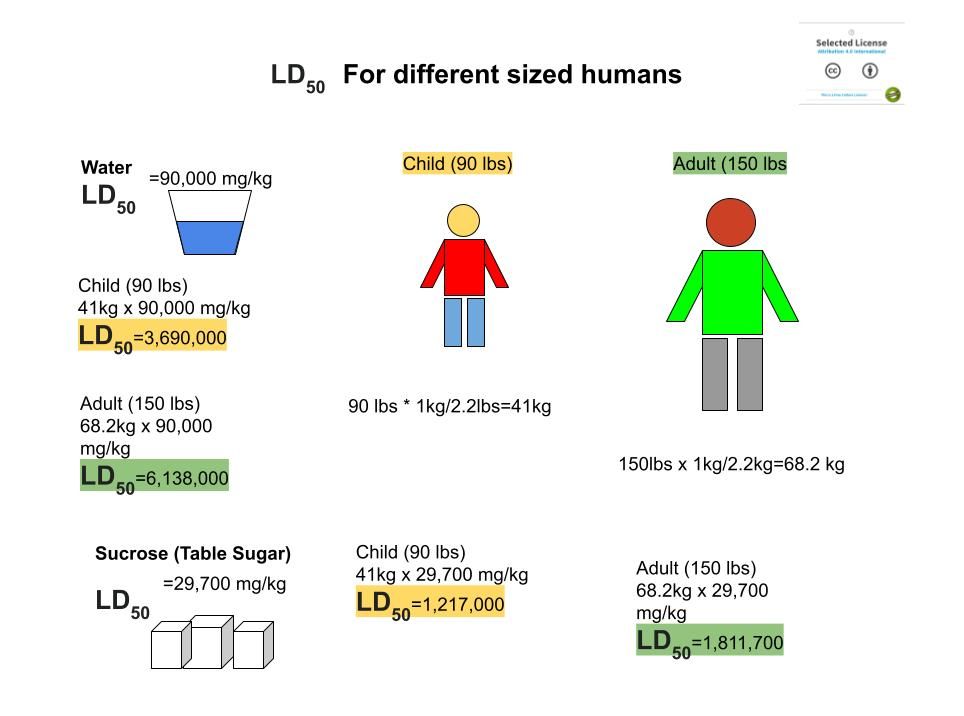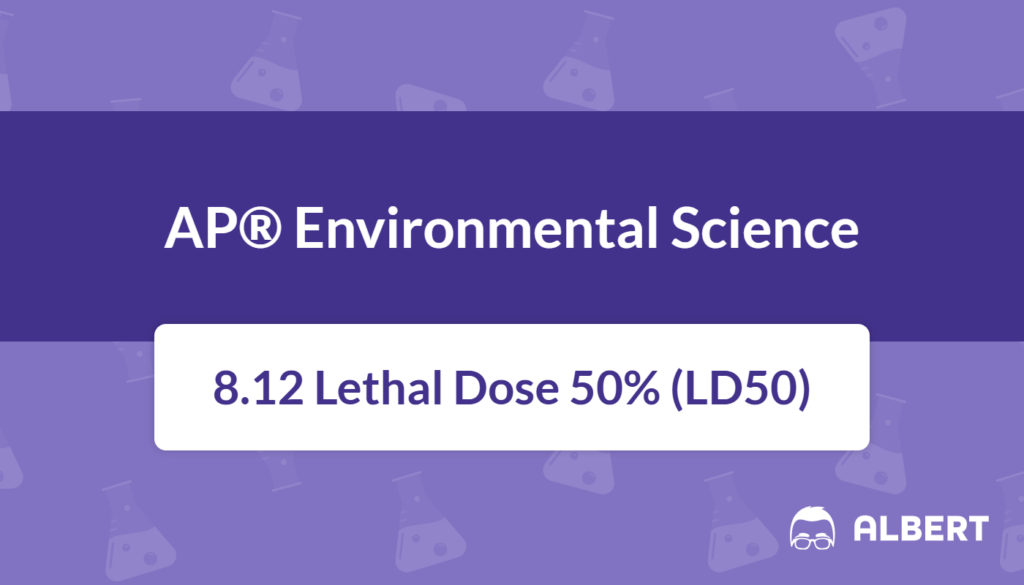What We Review
Introduction
It is crucial to understand how certain chemicals affect organisms. One measure that helps researchers and policymakers evaluate chemical toxicity is the Lethal Dose 50% (LD50), often called the “lethal dose 50 definition.” This measure indicates the dose of a substance that kills 50% of a test population under controlled conditions. Because chemicals can interact with the environment in complex ways, LD50 provides important information for those studying toxicology, regulation, and ecosystem health.
Chemicals exist everywhere in the environment, and their impact on different organisms can range from benign to lethal. Therefore, understanding how a chemical influences a particular population is important for safeguarding human health, preserving wildlife, and ensuring ecosystem stability. For example, certain pesticides may help control pests in agriculture, yet those same chemicals might also harm beneficial organisms if administered in high doses.
What Is Lethal Dose 50% (LD50)?
LD50 refers to the amount of a chemical that is lethal to 50% of a test population within a specified period. In toxicology, this measurement provides a standard way to compare the toxicity of different substances. The value is typically expressed in milligrams of the chemical per kilogram of body weight (\text{mg/kg}).
Although scientists first developed LD50 for pharmacology and poison research, environmental science now uses it to understand how chemicals move through ecosystems and harm wildlife. By analyzing LD50, researchers can predict the effects of chemical exposure on animals or plants—not only at the individual level but also in broader ecological contexts.
How Is LD50 Measured?
Toxicologists typically design studies to identify the point at which a single dose of a chemical kills half of the test organisms. They often rely on laboratory animals, such as rats or mice, to carry out controlled experiments. However, these protocols have ethical and methodological considerations, which will be discussed later.
Step-by-Step Example
- Researchers select a population of test organisms (e.g., 50 laboratory rats).
- They divide the population into groups, each receiving a different dose of the chemical in question (for instance, doses might range from 10 \text{mg/kg} to 200 \text{mg/kg}).
- Each group is observed for a specific period, noting how many animals die at each dose level.
- A dose–response curve is created by plotting the dose on the x-axis and the percentage of deaths on the y-axis.
- The LD50 is identified at the point on the curve corresponding to 50% mortality.
For instance, imagine that a study finds that 100 \text{mg/kg} of a pesticide kills 25% of test rats, while 200 \text{mg/kg} kills 75%. By observing trends between these dosage points, the researcher can estimate the exact lethal dose that kills 50% of the population. That midpoint can be narrowed down to a particular dose, typically expressed as a single number (e.g., 150 \text{mg/kg}).
Why Is LD50 Important?
Because chemicals can affect organisms in ways that may not be immediately visible, LD50 helps define a critical benchmark for regulatory oversight. Government agencies, such as the Environmental Protection Agency (EPA), use LD50 to decide acceptable exposure limits for chemicals in consumer products, agriculture, and industry.
In addition, understanding LD50 is vital for protecting wildlife and ecosystems. When a pesticide with a known LD50 leaks into an aquatic ecosystem, toxicologists can predict its potential impact on fish or amphibian populations. This research helps communities and policymakers safeguard biodiversity, maintain ecosystem function, and minimize unintended population declines.
Moreover, LD50 testing supports environmental assessments that track how contaminants accumulate in food webs. If a predator consumes prey that has ingested a chemical, the predator may face higher toxic loads over time. Consequently, knowing LD50 values is pivotal for evaluating long-term ecological health.
Factors Affecting LD50
Although LD50 is one standard measure of toxicity, many factors can shift the precise lethal dose for a population. Organisms do not all respond identically to the same chemical, so some individuals may have higher tolerance than others. Therefore, the following factors are common considerations:
- Age: Younger organisms may be more sensitive because their immune systems or detoxification pathways are still developing.
- Gender: Hormonal differences can alter how substances are processed in the body, influencing toxicity thresholds.
- Species Differences: A certain dose lethal to mice may not have the same effect on a fish population. That is why testing often spans multiple species for accurate risk assessments.

Example of Variation
Consider how a chemical might affect a waterfowl population versus a rodent population. Waterfowl may metabolize the substance differently, excreting toxins at a faster or slower rate. Consequently, the LD50 for a pesticide such as carbofuran might be lower (more toxic) for birds than for small mammals. This difference illustrates how toxicity is not uniform across wildlife, underscoring the need for careful testing in multiple species.
Applications of LD50
Because chemical safety extends across many industries, LD50 values are used in diverse contexts:
- Pharmacology: Researchers developing new drugs must understand their safety margin. A drug’s narrow therapeutic window might be perilous if its LD50 is too close to the therapeutic dose.
- Environmental Toxicology: Regulators often need to determine safe levels of agricultural chemicals, such as insecticides, based on LD50 values. These values inform guidelines for application rates in fields and orchards, minimizing harm to non-target species.
- Industry Safety Standards: Manufacturers handling hazardous chemicals rely on LD50 values to establish worker protection protocols. Proper storage, handling, and disposal procedures prevent accidents that might otherwise harm employees or surrounding communities.
Case Study
The infamous pesticide DDT (dichloro-diphenyl-trichloroethane) had a significant impact on bird populations during the mid-20th century. Although the LD50 for DDT in many bird species varied, some, such as the peregrine falcon, experienced vulnerability at lower doses. By referencing LD50 data, wildlife biologists highlighted the chemical’s harmful potential, which eventually led to strict regulations on DDT. This real-world scenario underscores why LD50 is critical when making informed decisions about environmental health and resources.
Ethical Considerations
LD50 testing historically relied on animal experimentation, which raises ethical questions. Some individuals argue that exposing animals to potentially lethal doses is cruel, while others maintain that these tests provide indispensable safety data. Consequently, many organizations and governments have developed guidelines that reduce the number of animals needed and minimize pain during testing.
Moreover, alternative methods continue to emerge. In-vitro testing (experiments performed in test tubes or cell cultures) and computer modeling can sometimes estimate LD50 without using living organisms. Although these alternatives are expanding, some scientists contend that they may not replicate the complexity of a full organism’s physiological responses.
Conclusion
LD50 acts as a cornerstone measurement in environmental science, helping regulators, researchers, and communities understand the toxicity of chemicals. By indicating the dose lethal to 50% of a test population, LD50 provides a standardized way to compare different substances and predict their impacts on ecosystems. In an era of ever-evolving chemical use—from pharmaceuticals to pesticides—the relevance of LD50 remains high.
Across various organisms, multiple factors can influence LD50, so scientists incorporate species differences, age, and gender in their research. Governments and industries rely on LD50 data to inform safe chemical usage and protect environmental health. At the same time, ethical considerations drive the search for alternatives that reduce harm to animals.
Therefore, it is beneficial for students to grasp these concepts. An understanding of LD50 complements broader topics like the carbon cycle, population studies, and renewable energy, because it shows how chemicals interact with living systems on a fundamental level.
Important Vocabulary
- Lethal Dose 50% (LD50): The amount of a chemical that kills 50% of a population under specific conditions.
- Toxicology: The study of how chemicals impact living organisms, often focusing on harmful effects.
- Population: A group of individuals from the same species living in a defined area, often tested or observed for scientific analysis.
- Dose–Response Curve: A graph showing the relationship between dosage and the effect on a group of organisms.
- Regulatory Affairs: Activities and processes designed to ensure that companies follow relevant laws and standards for public and environmental safety.
Sharpen Your Skills for AP® Environmental Science
Are you preparing for the AP® Environmental Science test? We’ve got you covered! Try our review articles designed to help you confidently tackle real-world AP® Environmental Science problems. You’ll find everything you need to succeed, from quick tips to detailed strategies. Start exploring now!
- AP® Environmental Science: 8.8 Review
- AP® Environmental Science: 8.9 Review
- AP® Environmental Science: 8.10 Review
Need help preparing for your AP® Environmental Science exam?
Albert has hundreds of AP® Environmental Science practice questions, free response, and full-length practice tests to try out.








